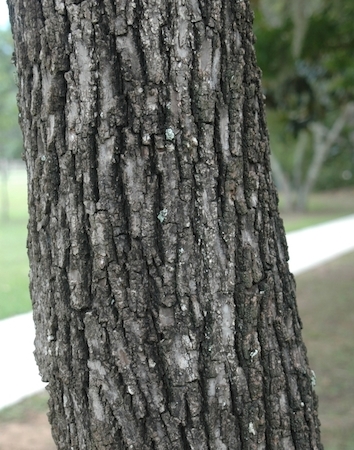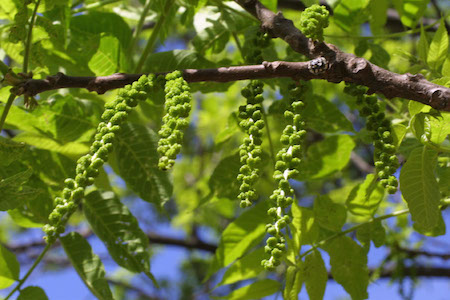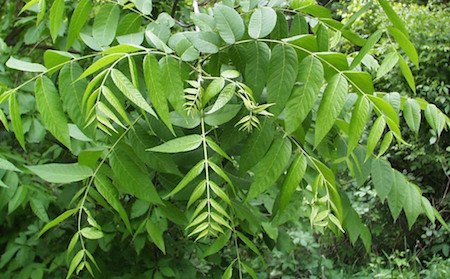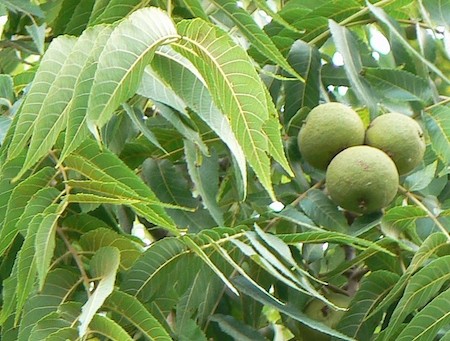Black Walnut
Specifications
- Latin (scientific) name: Juglans nigra. Juglans is the classic Latin name for the walnut, meaning nut of Jupiter. Nigra is Latin for black.
- Life expectancy: 100 years
- Height: 60 feet
- Circumference: 135 inches
- The height and circumference measurements listed here are for the largest-known black walnut tree in Atlanta. This tree is located on private property.
-
Special characteristics:
Probably the most famous thing about this tree is its wood for making furniture. But to reap this benefit you’ll need to chop your tree down and get it to the sawmill. You might want to do this after reading more about this tree!
The tree by itself is a widely spreading tree much like an oak. The tree imparts the aura of massive strength. The compound leaves look like big fronds as they rustle in the wind. The catkins (tassels, flowers) are heavy and vivid to the eye. The nuts are huge. -
Annoyance factors: Bomber nuts! If you thought hickory nuts were big and bad, wait till you see black walnuts. Yikes!! They are over 2 inches thick and heavy. This is one nut you don’t want to get hit with. It can hurt you. Always wear a hard hat when going under this tree during nut bearing season. No joke.
The nuts are not as dangerous on hard pavement however. You would be hard pressed to walk on one because they are so large. They almost resemble tennis balls left from a tennis ball shooting machine. You would have to be highly distracted to step on one of these rollers and if you did, you are sure to go down.
This tree has a natural allopathic substance. This is a natural chemical produced by the tree to discourage competition from other plants. It exudes from all parts of the tree. It essentially poisons the soil around it. Not many plants can grow near this tree except walnut seedlings. Talk about a defense mechanism! But there’s more.
The leaves are an irritant to animals, and some people are allergic to it. But there’s even more! Check out the fun facts section.
The tree is one of the first hardwoods to drop its leaves in fall and one of the last to bring them out in spring. This sometimes leaves people thinking their tree is sick or dead. -
Fun Facts:
This tree produces a mean natural chemical called juglone. The Indians had a use for the ground up hulls. They went fishing with it. They ground up the hulls and threw them into a slow moving stream. This would kill the fish and they would float up to the surface. They were then collected and served up over the campfire. The chemical is not poisonous when consumed. Need we say anything about composting the leaves and other black walnut parts? The compost will kill any plant it gets near.
-
Photo Credits:
Bark: Chris Evans, Illinois Wildlife Action Plan, Bugwood.org
Leaf: Paul Wray, Iowa State University, Bugwood.org
Flowers: Paul Wray, Iowa State University, Bugwood.org
Seeds: Rob Routledge, Sault College, Bugwood.org




